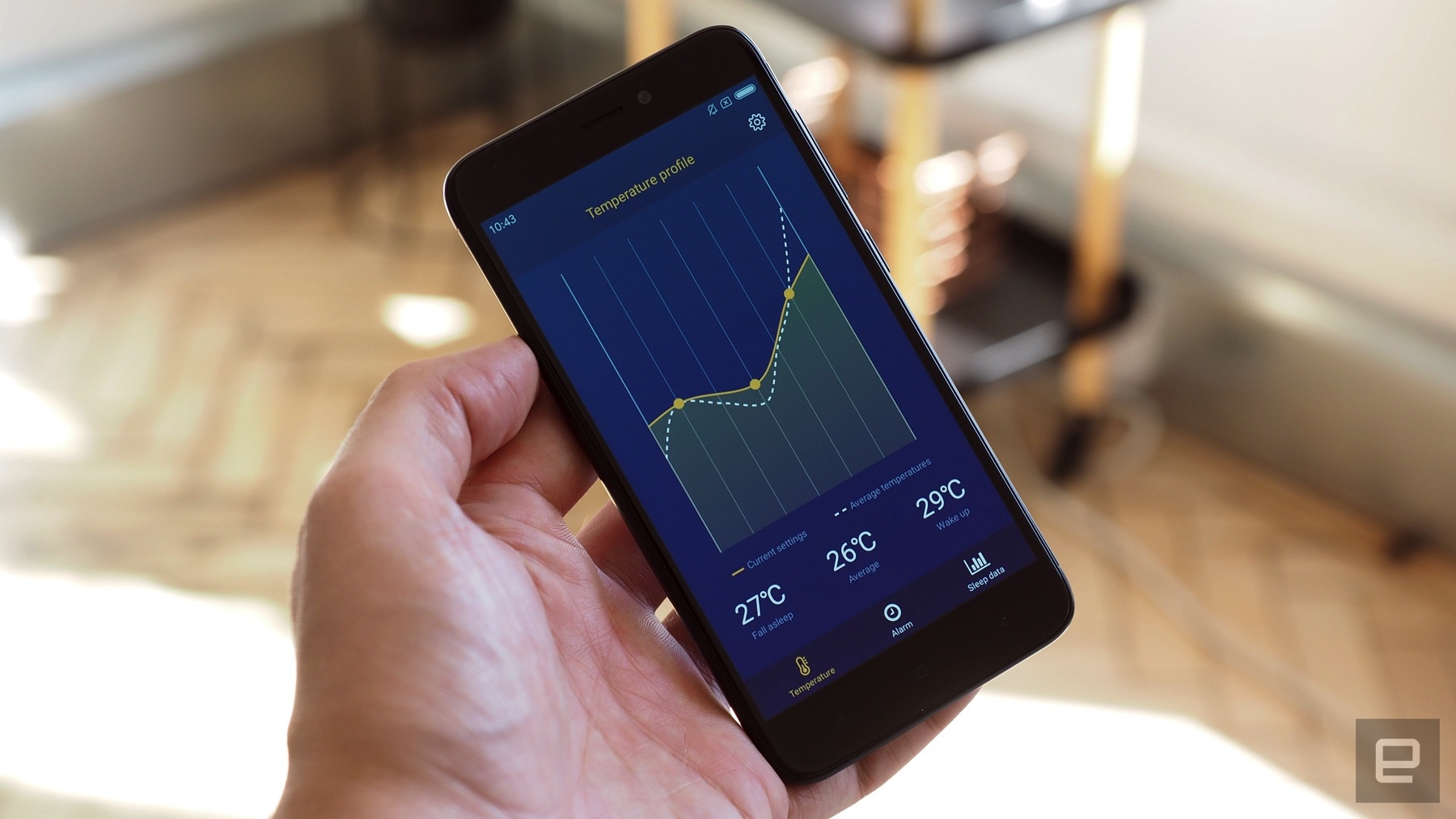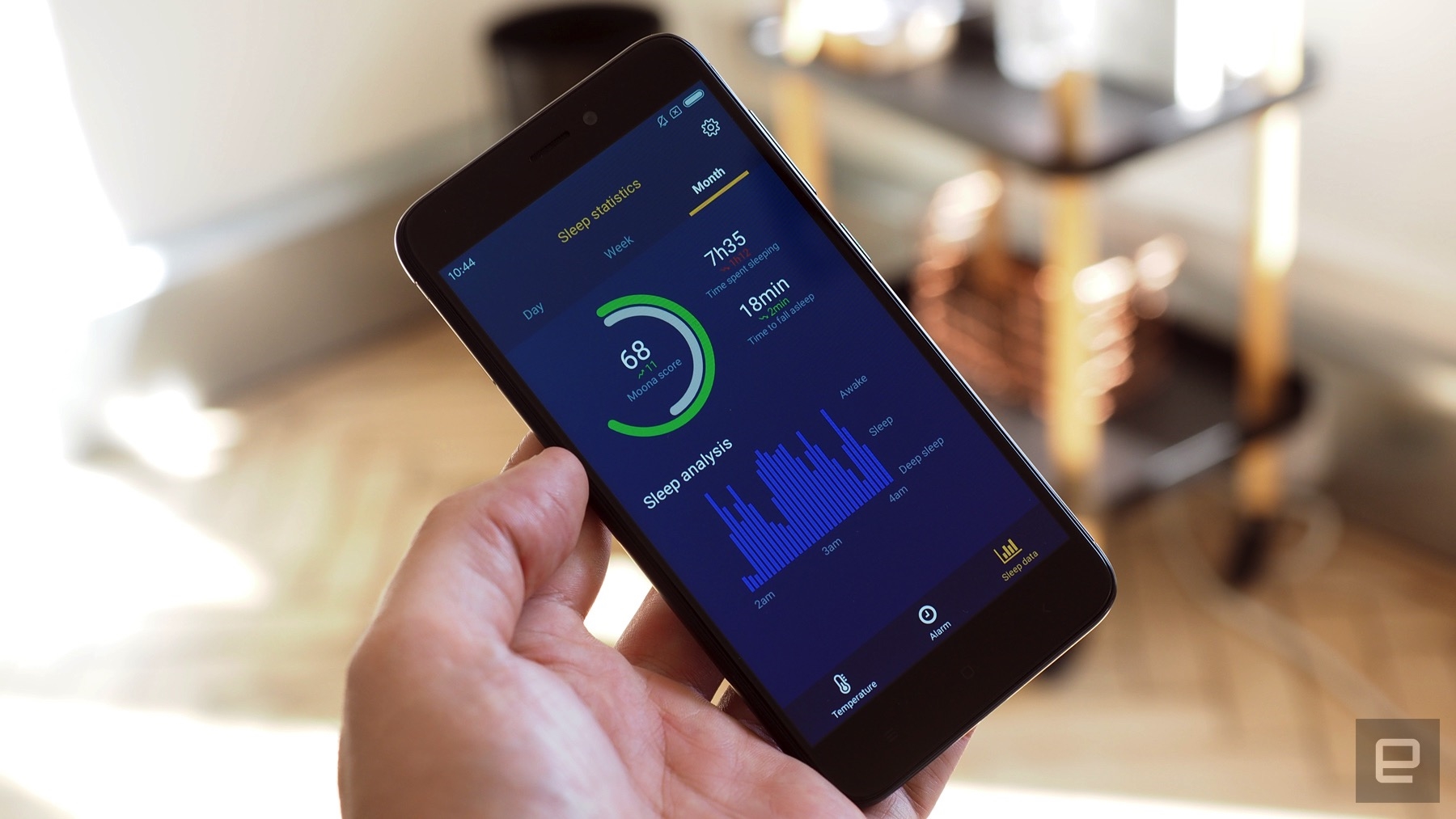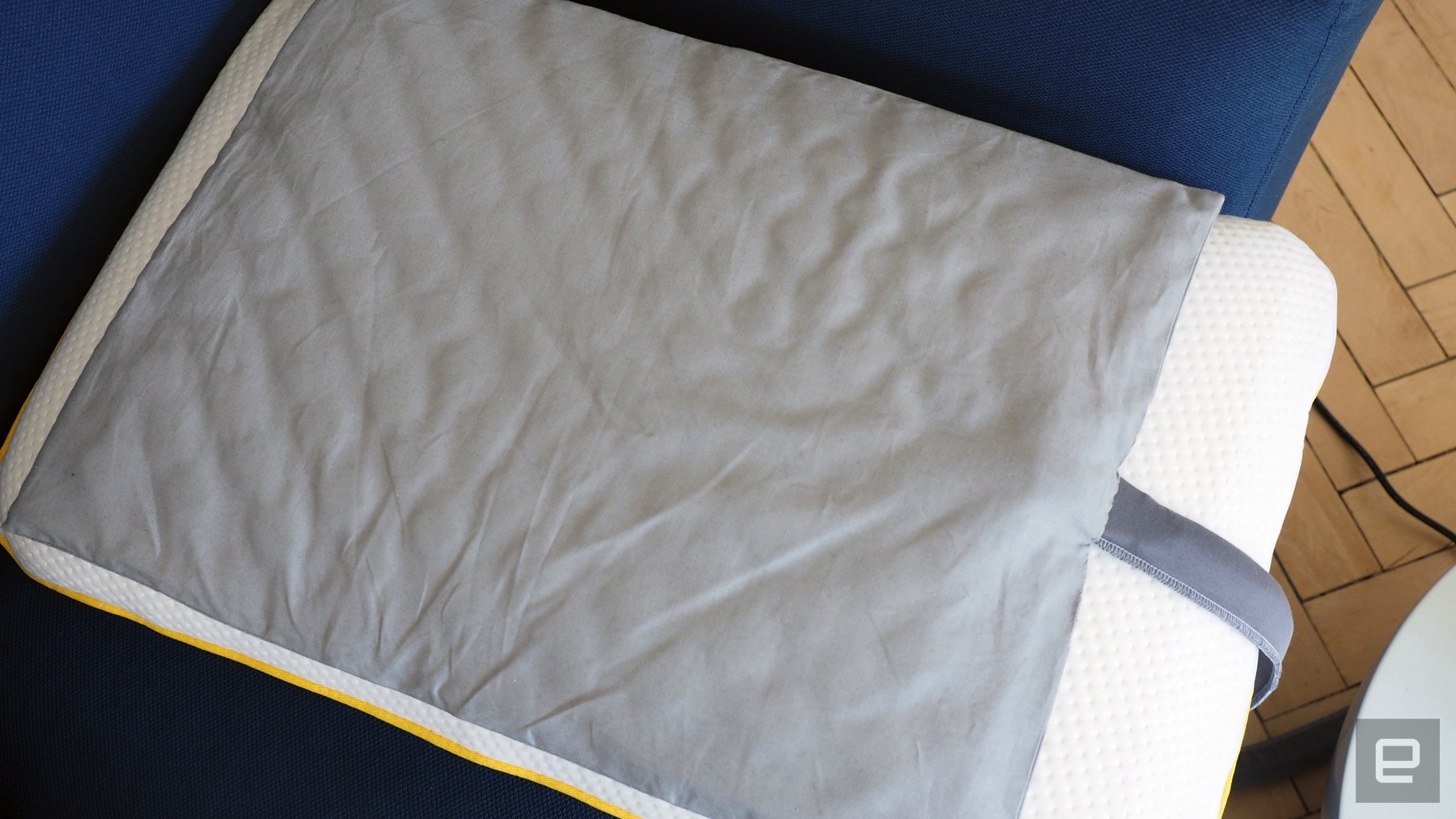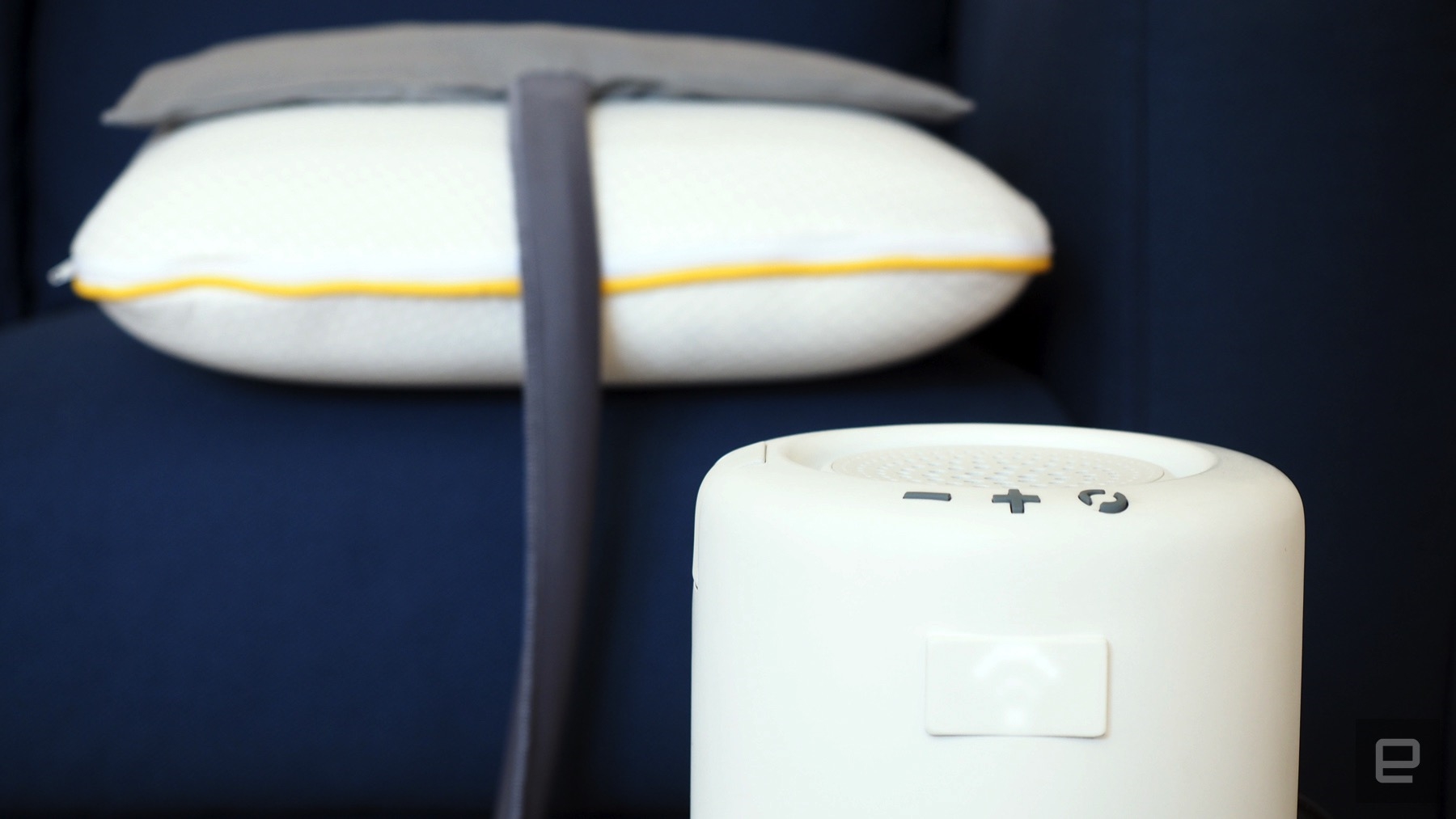The cold side of the pillow is one of life’s oddly satisfying phenomena. But no sooner have you felt its gratifying chill caress your cheek than it vanishes. The cold side of the pillow could be more than just a pleasant sensation for your conscious mind, though. It’s pretty well known that your body dumps heat as you drift off to sleep and your core temperature follows a rough nightly cycle, much like brain activity, hormone levels, breathing patterns and so on. There are various studies that suggest you can game the system, cool yourself down and minimize those restless nights. That’s the intent behind the Moona smart pillow pad: A temperature-regulating pad that keeps the cold side of the pillow cold, indefinitely.
There are a number of temperature-regulating products pitched as sleep aids you can buy already. These range from simple mattress toppers that improve air circulation under the covers to cooling gel inserts for pillows. There are fans designed to slide in between your mattress and duvet, and elaborate mattress covers that pump air or water through a network of channels to create a microclimate under your sheets. From what I can see, though, there’s nothing quite like the Moona pad.
For one, it’s the only “active” device targeting the pillow area exclusively, and also the only such sleep aid with smart functionality. The main bulk of the product is a memory foam pad you slip into your pillowcase, which is tethered to a barrel-shaped hub destined for your bedside table. This cools and heats water, sending it down the tether and pumping it through a mesh of water pockets in the pad. The hub also has sensors that monitor room temperature, humidity and ambient light level.
The pad itself has a built-in sleep tracker, not just so users can observe that information, but also to educate the machine learning side of things. Naturally, you control Moona by way of mobile app, setting up a personalized temperature cycle: How cool you want the pillow when you’re trying to get to sleep, the setting you want during the majority of the night, and the waking temperature.

According to the creators of Moona, you wanna keeps things pretty cool during the night and warm things up in the morning. The change in sensation as the pillow pad begins to heat up is said to rouse you naturally, in the same way sunrise alarm clocks do. Within the app, you can set your bedtime and what time you want to wake up and let Moona adjust the temperature profile automatically. There’s also a nap feature that’ll do exactly the same thing, but condense the temperature changes into, say, a 20-minute window.
The sleep tracking element of the device adds another layer to this. When you first load up the Moona app, it’ll ask you questions about your sleeping habits. Over the first ten days of use, it’ll hit you with follow-up queries and continue to adjust your temperature arc. From then on, it’ll look at your sleep score (having tracked your sleep quality over time), and keep tweaking the temperatures and timings as it tries to find the right sequence for you. You can still adjust the settings manually, of course. You may want the pillow pad to get extra-cold in the summer to wake you up in the morning instead of heating up, for example.

How effective these promised machine learning smarts perform over time, I couldn’t tell you. I did try the pad out briefly, however, and it was glorious. The sustained sensation of the refreshing, cold side of the pillow touching my cheek was extremely pleasant. It’s like eating a delicious chocolate cake but not becoming desensitized to the flavor, where every bite is like the first. The hub part is effectively silent, too, though you can hear the hum of the water pumping around the pad when your ear’s pressed against it.
The low monotonous drone could be an issue for some, but it felt like relaxing, white noise to me. After roughly five minutes of laying down, awkwardly asking one of the device’s creators questions from a horizontal position, I had to rise on account of feeling groggy enough that I could nap right there, mid-briefing. One of the main issues for the Moona team, in my opinion, is asking someone to keep this in their bedroom. The thing has been designed to be as inoffensive as possible, but the hub, the pad and the tether won’t blend into your bedroom decor quite like decorative cushions and candles.

Then there’s the fact that it’s quite a niche device for a very specific use case. In the same way air purifiers can be a hard sell because most people don’t care so much about what they can’t see, I don’t imagine people buying this just to see if it helps them get a better night’s sleep. And all of this is important, because the Moona team is taking to Kickstarter today to raise $50,000 to help launch the product. Early bird pricing starts at $219 — $399 being the final RRP.
With Moona basically being production-ready, the hope is to ship units to backers by next summer. But with all crowdfunding projects, you have to remember that it might not get funded, there could be manufacturing delays, and numerous other things could go wrong from now until launch, so proceed at your own risk.
(82)

